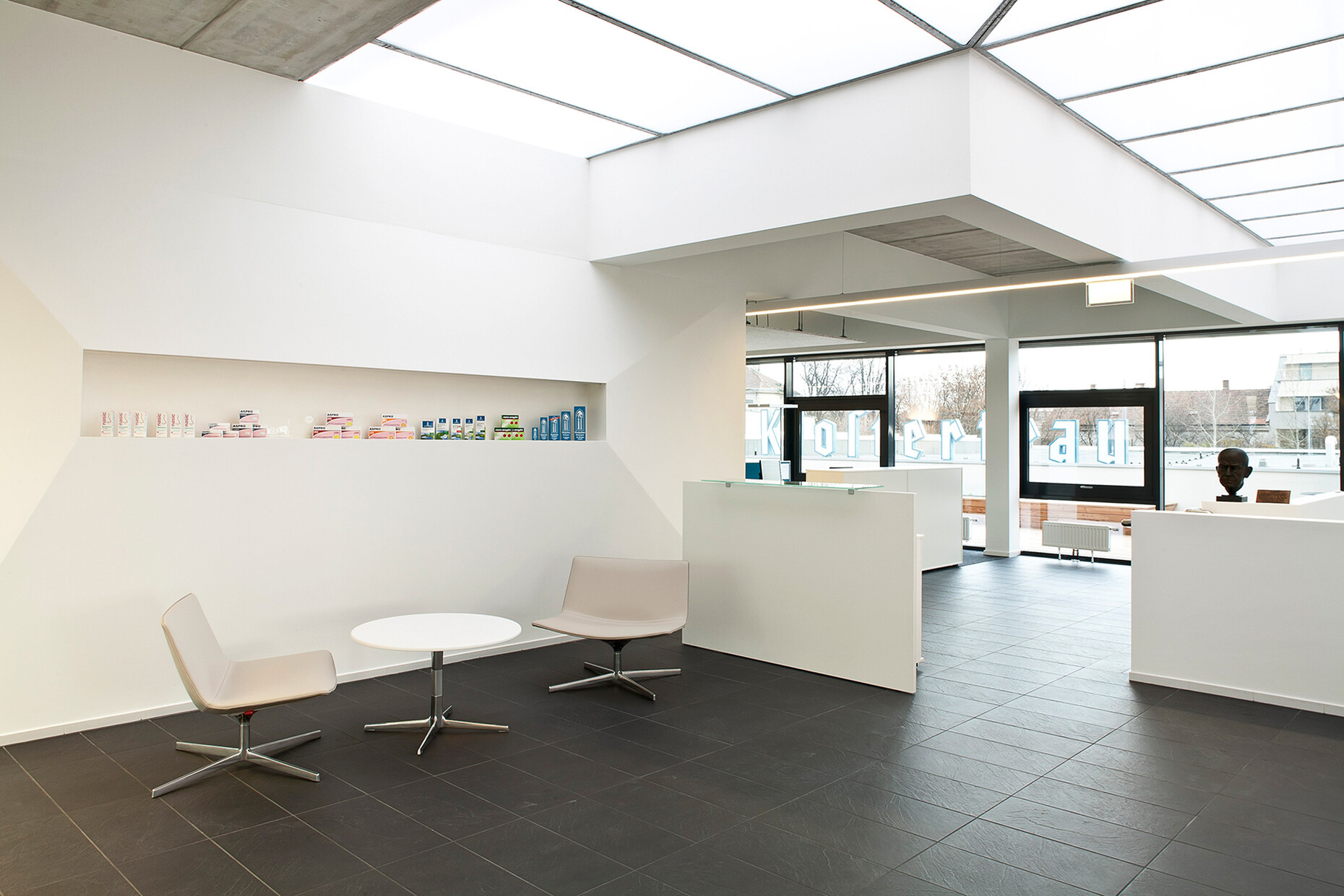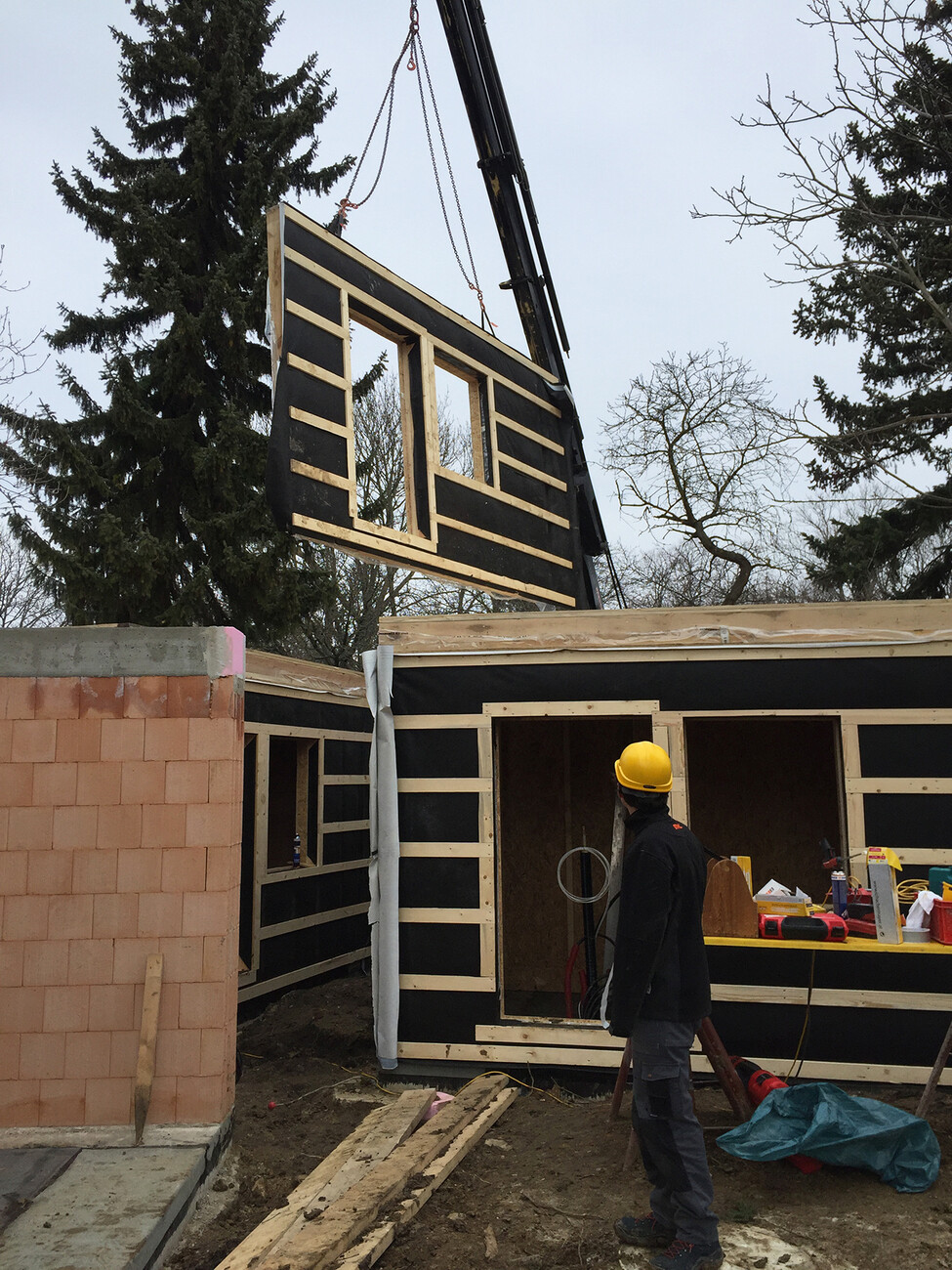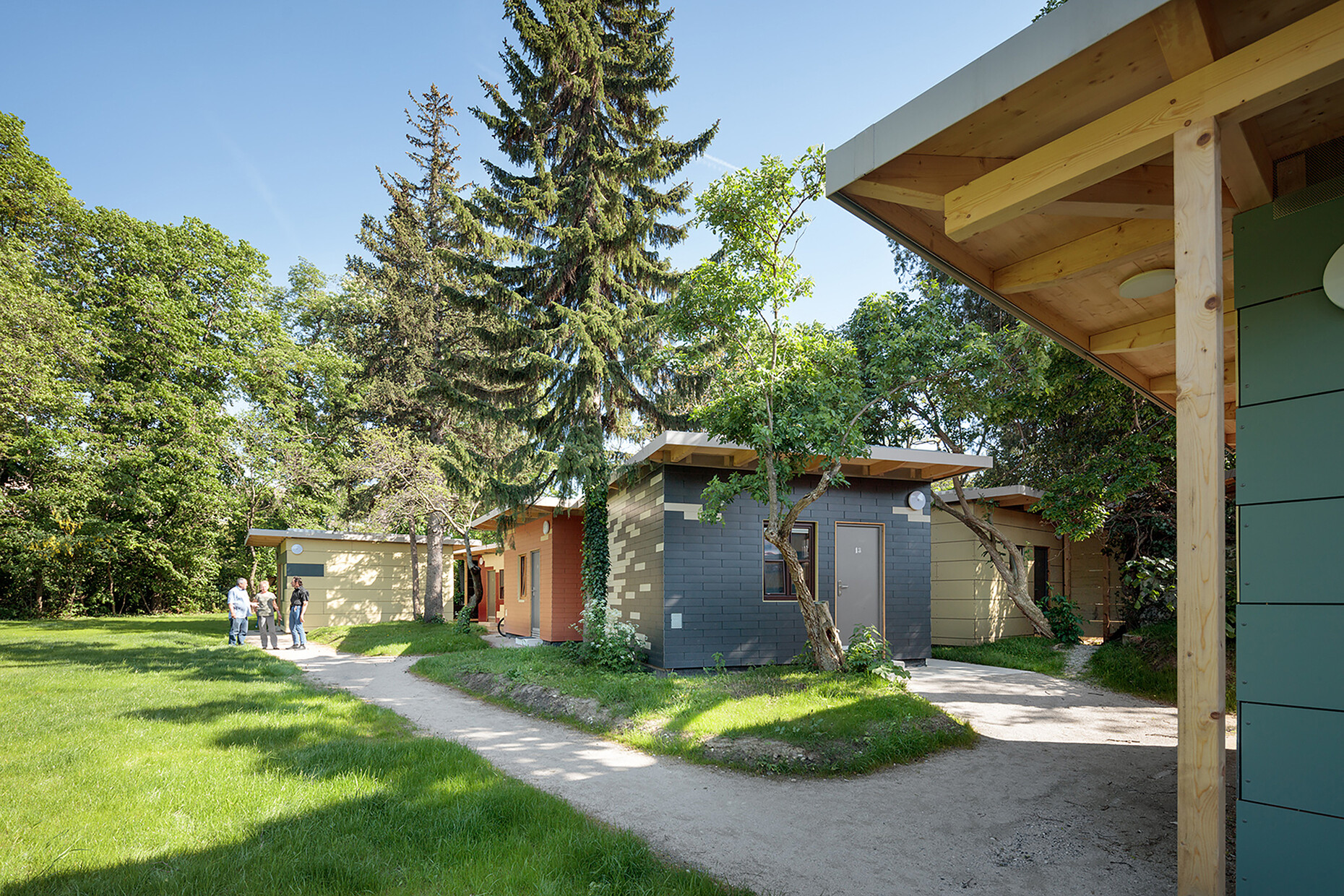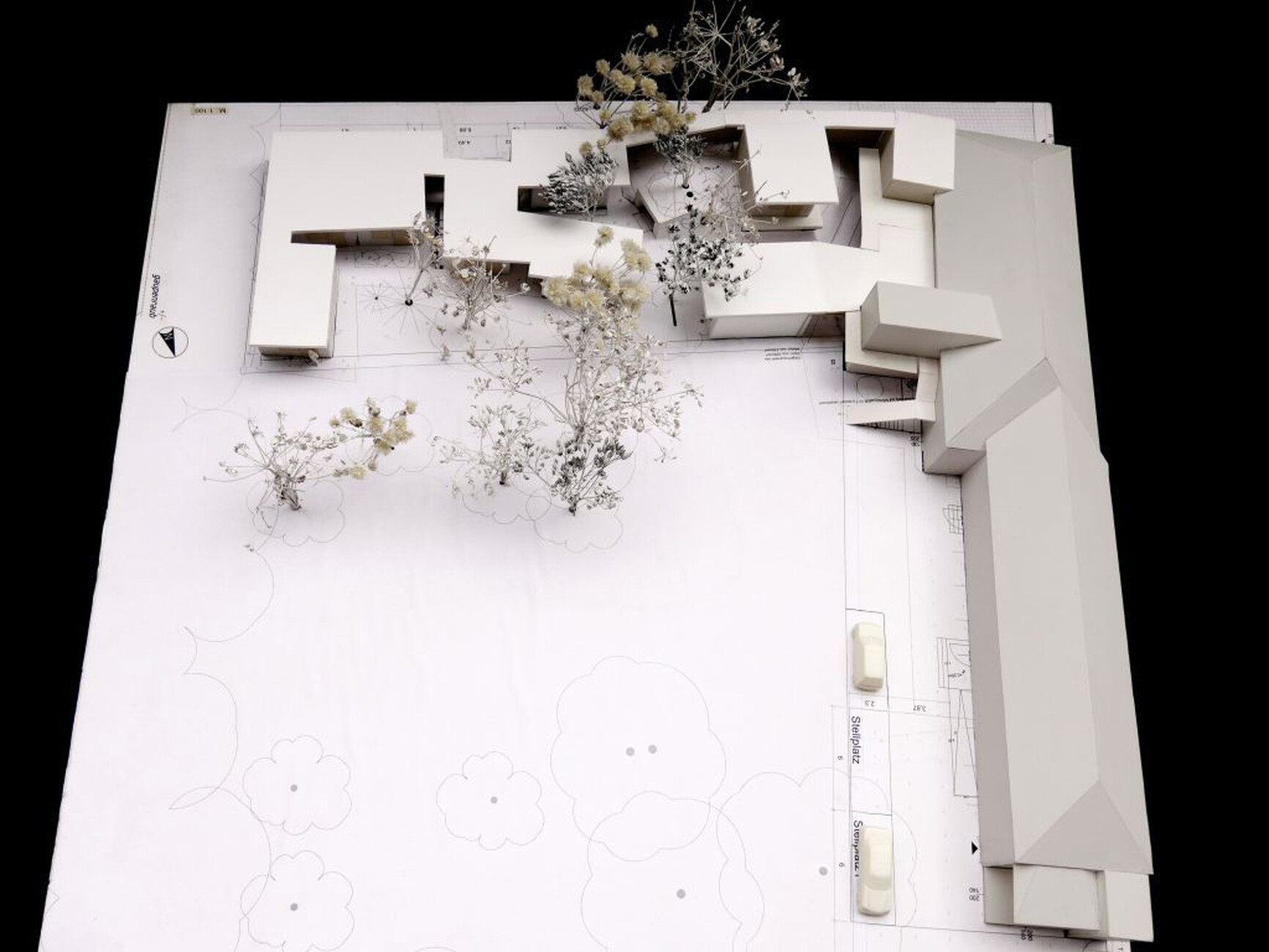SUSTAINABILITY
Shape identity
For more than twenty years, the Viennese architecture firm gaupenraub +/- has been realising extraordinary ideas: Like the "Vinzi" projects, buildings for the Austrian Vinzenz communities, which are committed to helping disadvantaged people. As early as 2004, they co-initiated an emergency sleeping facility for the homeless, followed in 2010 by a shared apartment for homeless people, the VinziRast-WG, and in 2013 by a shared housing project for homeless people and students, the "VinziRast-mittendrin", and in 2018 by accommodation for alcoholic, homeless men, the "VinziDorf Wien". For these and other projects, gaupenraub +/- has received numerous awards, recently even the City of Vienna's Lifetime Achievement Award. The founders Ulrike Schartner and Alexander Hagner tell us why this is no reason to stop.
Simone Kraft: In recent years, gaupenraub +/- has become known primarily for its "Vinzi" projects. This social commitment is made possible by a conscious division of your work - in addition to voluntary projects, you also take on "regular" commissions, and you refrain from taking part in competitions altogether.
Alexander Hagner: For our projects for marginalised people we now also receive - very reduced - fees, because these projects are getting bigger and bigger and we are a very small office, currently only three people. Today, we simply can't afford to do such large projects completely on a voluntary basis. But the fees for these projects are not enough to finance us as an office. That's why we have a hybrid construction: between 20 and 50 per cent we work on projects for marginalised groups that are not so well paid.
Ulrike Schartner: That's why we decided not to take part in competitions, because it wouldn't work out - investing in competitions with the risk of not winning, and at the same time investing in social projects.
So, in a way, you devote half your time to voluntary projects and half to commercial private projects. What connects the two "worlds"?
Ulrike Schartner: Building in and with existing buildings. Most of the projects we are involved with are either the filling of gaps between buildings or the conversion of old buildings. Meanwhile, building in existing structures is one of the most important construction tasks of the future - we've been working on it for a long time. One example is the conversion of an old mill in a village into new living space (Würzlmühle in Kichberg an der Wild, 2016/17), which would otherwise have been demolished, for which we won the Lower Austrian Timber Construction Prize 2019 - our "commercial" projects have also won prizes. For Klosterfrau Melissengeist in Vienna, for example, we converted, renovated and extended an office and warehouse building ten years ago and won the Ethouse Award for it. We prefer not to build on greenfield sites. We always try to build on buildings and implement things that already exist.
Alexander Hagner: We have been doing this for a good twenty years now. In 2002, we started working with this other kind of architecture in areas of marginalised groups, because this is where the biggest gap can be observed - because what architecture can do, as we understand it, is simply not available.
Before we come back to this other kind of architecture, a quick look abroad...
Ulrike Schartner: In Austria, we were allowed to help convert the Swedish embassy in a listed building as contact architects in 2015. Back then, the Swedes wanted to get away from Russian natural gas, they wanted an energy-autonomous embassy. I can remember that at the time this was laughed at because Vienna was simply heated with natural gas. But the Swedes wanted to be independent and today they heat with geothermal energy and solar on the roof.
Alexander Hagner: Even though almost all our projects are in Austria: A commission is just starting in Marburg an der Lahn, which began on the initiative of the mayor. I mention this because the politicians in Vienna have mostly tried to prevent us from doing social projects. Abroad, we mainly give a lot of lectures, for example in the Czech Republic, Italy, Slovenia, Sweden, Hungary, Germany and even in the USA. Often interested foreign groups come to us and we guide them through our projects. They want to learn from our experiences. We see our work as a contribution to building culture, no matter in which field it is located, whether for paying or non-paying clients. We see ourselves as creators of culture and have very high standards for our work, which we try to implement to the best of our knowledge and belief, regardless of the target group - but always together with them.
Together with the target group, in what way do you mean?
Alexander Hagner: We are shaping our architectural production more and more as a process, not only in the development or construction phase, but by trying to involve all kinds of people in the development process of a project as a whole - the residents, the future users, the clients. Not so much as a fad for participation, but because it makes much more sense than a self-contained project: box put up, key handed over, done. In our way, there is much more acceptance for an architecture that then takes place before it is even opened. However, we often work in contexts where it makes sense to involve others at an early stage. In private projects, of course, it's a bit more conventional, and people don't usually like it when too many people have a say. In the meantime, we have achieved many of our goals, we are in fact something like prophets in our country on these issues.
And you have already received a lifetime achievement award!
Ulrike Schartner: Exactly, we can stop there now! No, all joking aside. The great interest in our work makes us happy and motivates us to continue. It also has to do with the increasing refugee movements. How do you quickly get accommodation for people who don't have a roof over their heads? We have had the expertise here for a long time, where others have only just begun to deal with it. And now this topic actually merges seamlessly with the question of affordable housing. How do you deal with existing buildings? How do you deal with what is already there? How can you recycle building elements? These are all issues that we have been dealing with from the very beginning. It is true that we have often made a virtue out of necessity rather than thinking about it from the outset from a sustainability perspective, but now this topic has completely arrived in the mainstream. Suddenly it no longer matters what new greenfield sites are being built.
You have virtually introduced urban mining, i.e. the recycling of the city's raw materials, avant la lettre.
Alexander Hagner: We have always liked to look at what is actually there before we made a "shopping list" for a project. What is there, could we not work with this or that? Whether it's human resources or existing buildings or components, from hardware to software, the whole spectrum. Originally, this also came very much out of the financial pressure that weighs on a social project. You can't just make a parts list and wish for companies and products. But we also build a lot for private use, and here too we look at available resources; that has always been a concern of ours. Even as a student, I climbed into containers and looked to see if there was anything exciting that I might need. The most beautiful thing about it is how design and identity can be created from what is already there. How you can identify things with meaning, with history, and then - with the necessary diversity of ideas - implement them in what you have in mind.
Ulrike Schartner: Old things don't always have to be broken, but can have a value of their own or even be so valuable that you couldn't afford them new. When I think of the "VinziRast mittendrin", it was an old Biedermeier house with windows and a natural stone frame. If we had demolished the house, we would never have been able to finance such beautiful windows again! But of course the planning process in this style is much more elaborate and demanding, that's absolutely right, and thus certainly not always economical for such a small office as we are.
What makes building and planning with old elements so costly and also uneconomical? You actually save material by reusing things that already exist.
Ulrike Schartner: For example, we first have to find craftsmen who are willing and able to handle these old building components professionally. Most of them don't react very enthusiastically to this. Then there are the questions of warranty, etc.
Alexander Hagner: For a Vinzi project, for example, we dismantled an empty glass house in St. Pölten, 700 square metres of glass house space, and rebuilt it 80 kilometres away with many supporters. Now there are plants in it, so the air must be able to circulate, it must be possible to open it so that it doesn't get too hot. There are hand cranks for that, they don't need electricity, no energy. But you could get a finger caught and hurt yourself. So today you have to have a protective cover built over it so that there is a permit. And so on. Of course, this in no way encourages people to preserve existing structures or even to "harvest" them, i.e. to dismantle them and reuse them in a new context.
Ulrike Schartner: Of course, we wish that "normal" architectural production would also soon opt for more resource-efficient building. However, the framework conditions for this are still lacking at the moment. The building code is very conservative, we always have one foot in jail in our projects, figuratively speaking, because if you work with old components, you simply can't meet certain standards. In addition, there is the general insurance mania, everything has to be 100 per cent insured, there has to be a warranty for every screw. Everything is logged and documented. We fully understand that something like this does not really encourage many of our colleagues to build in a similar way. Here you need builders who share responsibility, otherwise it won't work.
Alexander Hagner: I think that if politicians are serious about sustainability, about saving resources, about rethinking building, then they must also rethink the standards and laws in this direction. If you want to achieve a rethink, then you have to create the political framework conditions for it and also offer incentives, for example through a funding system for circular architecture.
You have already mentioned that identity can become design, and that buildings gain character from dealing with and integrating the existing. What does that mean?
Alexander Hagner: For example, Berlin, where there has been and still is a lot of new construction. But all the new architecture doesn't appeal to me at all, it seems nano-coated. You often think "I saw that building somewhere else yesterday". They are confusable, interchangeable. They lack their own character and charm anyway. We, on the other hand, are always looking for things that create identity, that define the place, a building, the neighbourhood, something that is unmistakable, that builds a bridge to a story. We want to continue telling these stories. We both studied under Wolf D. Prix, which means that the design standards were always very high. Expressive architecture, sexy architecture! When the component of the found or the existing is added, a new dynamic emerges: how do what I imagine and what is there - and which one has often enough not looked for at all - go together? What becomes of it? The result usually has much more character, its own identity! That's what we also want from our colleagues, that they take another look at old buildings and see if they can't be given a new lease of life, so that a special identity can automatically develop, something that is so lacking in our new building production today, which comes across as so abstract, so unapproachably perfect.
Projects like the "Vinzi" buildings work differently. Of course, their intention is also different: they bring people together who usually have little or no contact, such as students and homeless people. You once said that "empathy is the glue of society".
Alexander Hagner: Empathy is the glue of society, exactly. But empathy can only develop when I have contact with people who are not in my usual "bubble". You need real meeting spaces, we noticed that in the times of the pandemic in particular, when people went shopping three times a day to stand in line and talk to others. It is incredibly important that there are places where these informal meetings between people who normally have nothing to do with each other can happen. However, this is not meant to be social romanticism either! Of course there are conflicts between different groups. But we don't want to use these conflicts as drivers for architectural development - think, for example, of all the structural "forms of protection", gated communities and so on. Our strategy, regardless of whether it is a social or business project, is always to look for the potential. Where do the special opportunities of a project lie? In a place, a group of people, a spatial idea? "We want to be truffle pigs for opportunities", I once said. Using opportunities and potential as the driving force for a project is a wonderful strategy, but it still doesn't spare you from being very sensitive to possible problems and conflicts, for example by creating spaces that take the pressure off, for example by putting a development outside and creating several pathways there. If I meet someone with whom I have a conflict at the moment, I can take another path and the situation is relaxed.
Ulrike Schartner: The opportunities to meet others informally are becoming fewer and fewer. As architects we can create better or worse public spaces, inside and outside. A favourite example here in Vienna is the Naschmarkt, where everyone from bank managers to homeless people go. We are losing such low-threshold places, we need much more of them - and we want to create them!

































